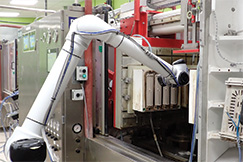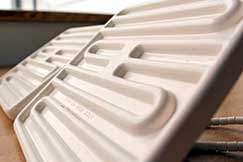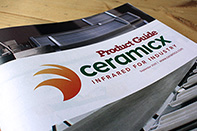Types of heat transfer
There are three principal methods of heat transfer: conduction, convection and radiation.
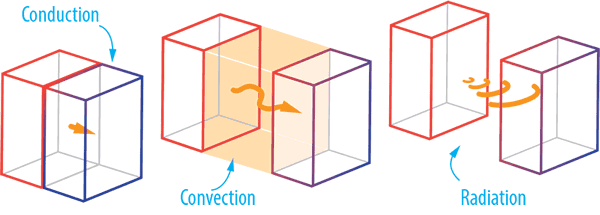
Conductive heat a direct heat transfer between two physical bodies/properties.
The symbol ‘k’ is a measure of how well various substances transmit heat. The amount of heat that can be transferred through a surface depends on the temperature difference, the surface area, the material thermal conductivity, and material thickness.
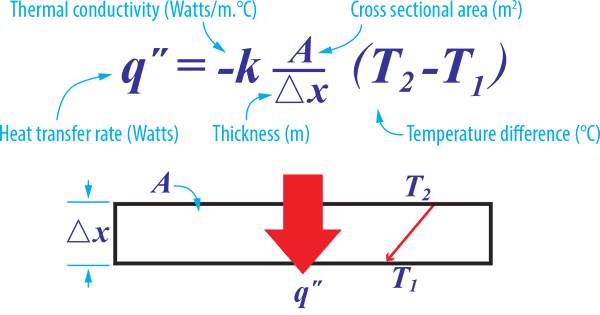 Convective heat transfer occurs by the movement of fluids (liquids and gases). When a fluid heats up it expands and decreases in density. A convection current forms as warm fluid rises and cool fluid sinks. Thermal energy (heat) is carried by the particles in these moving currents from one location to another. Convection can be free convection using the surrounding fluid (liquid or gas) or forced convection when a pump or fan is used.
Convective heat transfer occurs by the movement of fluids (liquids and gases). When a fluid heats up it expands and decreases in density. A convection current forms as warm fluid rises and cool fluid sinks. Thermal energy (heat) is carried by the particles in these moving currents from one location to another. Convection can be free convection using the surrounding fluid (liquid or gas) or forced convection when a pump or fan is used.

Convectional heat also depends on the surface area. If the surface contacting the fluid is increased, the rate of heat transfer also increases. This is why almost all convectional devices have fins for efficient operation and delivery.
Radiant heat transfer is non-contact and therefore requires no medium for heat transfer. Radiation is heat transfer by electromagnetic waves (including light) produced by objects because of their temperature. The higher the temperature of an object, the greater the thermal radiation it emits. Radiant heat transfer occurs when the emitted radiation strikes another body and is absorbed.
The key principles of IR heating and heat transfer
As we’ve already mentioned, infrared radiation is an electromagnetic wave which doesn’t require a medium for heat transfer. Infrared (‘below red’ in Latin ) is electromagnetic radiation in the wavelength range of 0.78 μm and 1000 μm (1 mm). Radiation of shorter wavelengths is more energetic and contains more thermal energy. The diagram below shows the relationship between wavelength and frequency:
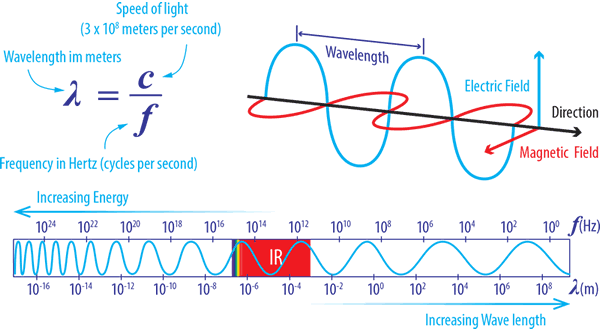
Infrared radiation uses electromagnetic waves travelling at the speed of light.
Thermal radiation is emitted by any matter with a temperature above 0 K (-273.15°C).
Radiative heat transfer occurs when the emitted electromagnetic waves are absorbed.
Emission of radiation
In theory, IR radiation can emit in all directions. Infrared emitters, therefore, need to be designed and made in order to follow ‘line of sight’ or view factor principles. View factor (Vf) principles are calibrated from 0 to 1 defining the amount of radiant energy emitted from the source hitting the target body. The view factor is better closer to 1, so the use of reflectors, or re-emitters, can improve the view factor.
Absorption of radiation
All infrared emissions are either reflected, absorbed, or transmitted. There is a simple and arithmetic relationship between these three factors which totals 1 or 100%. This totality is termed a black body – an idealised physical entity that absorbs all electromagnetic radiation.
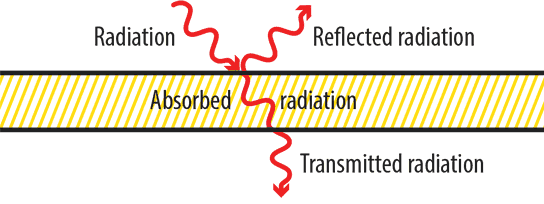

Total radiation = Reflection + Absorption + Transmission
Applying this information
Ceramicx takes particular care to understand the emission criteria needed for a material to be heated effectively. For a material to thoroughly absorb radiation even the the smallest parameters effect this process. To learn more about the applications Ceramicx have designed and manufactured for, please see our customer case studies.
Previous page: The application of infrared heat in industrial process
Next page: Application of infrared heat to materials



